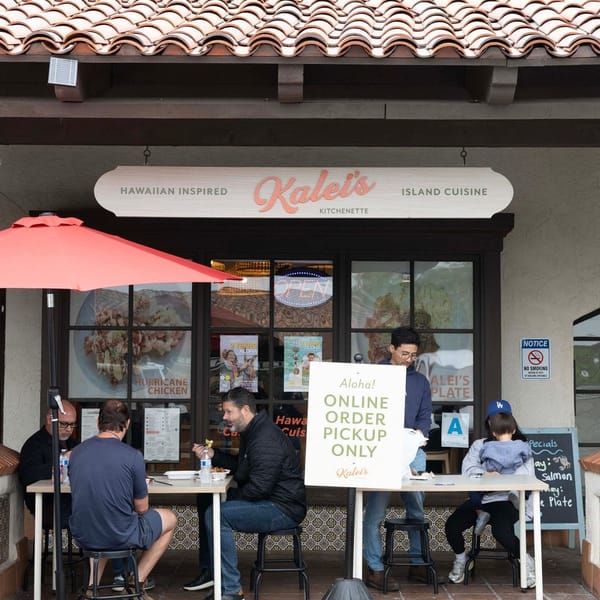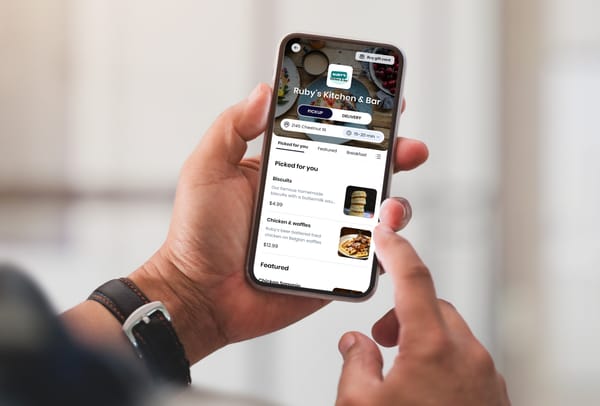During unprecedented times, financial help for restaurant owners and operators emerged.
Recognizing restaurants as economic and employment engines, the federal government teamed up with state and local agencies, nonprofits, and corporations to support America's restaurants during the COVID-19 pandemic. Loan and grant programs became a lifeline to restaurants struggling amid government-mandated closures, consumer anxiety, and economic uncertainty.
Businesses in the accommodations and food service industry received more than $42 billion in the first draw of the Paycheck Protection Program (PPP) in spring 2020, Nation's Restaurant News reports. In the second draw of PPP funding in early 2021, more than 134,000 accommodations and food service industry businesses received an additional $18 billion, according to the U.S. Small Business Administration.
Many of the most publicized relief programs, including PPP and the U.S. government's $28.6 billion Restaurant Revitalization Fund, have ended. But there's still a diverse array of funding sources available to restaurants, including various programs unrelated to COVID-19. Here's a quick look at what's available to help you help steady, support, and grow your restaurant.
The many benefits of a cash infusion.
The hunger for financial support to sustain operations and pay employees was particularly intense during the COVID-19 pandemic. But many restaurants needed capital before the pandemic—and still need cash as the novel coronavirus retreats. Restaurants can always find smart, strategic ways to spend cash to enhance operations, improve customer service, and drive results. For example, restaurants might use capital to:
- Open another location or improve existing properties, such as adding an outdoor patio
- Purchase real estate
- Invest in technology, such as a new point-of-sale system that enables modern functions like online ordering, loyalty programs, and online reservations
- Obtain a mobile unit for catering orders or special events
- Upgrade kitchen equipment
- Address seasonal hiring and marketing needs
- Create new revenue streams through packaged goods or on-site events
- Refinance business debt
6 ways to access capital.
There are plenty of ways your restaurant can obtain capital, such as traditional bank loans and programs backed by the federal government and more contemporary options from online lenders and crowdfunding campaigns. Every vehicle has unique criteria, benefits, and drawbacks, but the result is often the same: more cash to stabilize your restaurant.
1. Traditional bank loans.
Brick-and-mortar banks regularly lend money to small businesses, and they have an established—and rigorous—lending process. Loans typically come with competitive rates and favorable payback periods, and they can be tailored to your restaurant's needs. But the application process can often be complicated by long wait times and strict requirements, such as high personal credit scores.
Credit unions are brick-and-mortar alternatives to banks. Though they're not as predictable as banks, credit unions are more flexible and might offer better loan terms.
2. Small Business Administration (SBA) loans.
SBA loans can be used for most business purposes, such as working capital and long-term fixed assets, though some loan programs set spending restrictions. SBA loans are backed by the federal government, which means they carry less risk for banks. They also eliminate many common loan fees and share rather favorable terms, including competitive rates and long-term financing.
Tight eligibility requirements, however, can make SBA loans tough to come by. For example, you must have invested time or money into your business and attempted to capture funds from other lenders. A strong credit score—usually 600 or above—boosts your chances of landing an SBA loan, too.
3. Alternative lenders.
If you want quicker access to cash and don't qualify for a traditional bank loan, you could get one from an alternative lender.
Alternative lenders are like banks in that they'll evaluate your business revenue and profitability metrics to determine your eligibility. But where traditional lenders might take weeks—if not months—to approve a loan, an alternative lender might approve a loan in as little as a business day, and they might be more willing to bend some of their requirements to lend you money. Speed and leniency come with a trade-off, though—interest rates are usually higher, and could reach as high as 10%.
Your credit card processor or your point-of-sale system provider might issue you a loan, too. With SpotOn, for example, you can gain capital in one to three business days and apply a fixed percentage of your daily sales directly toward your balance, meaning you only pay as you earn.
4. Grants.
Unlike loans, grants don't need to be repaid. Most small business grants are offered by nonprofits and foundations, and they have strict qualifying criteria. For instance, WomensNet's Amber Grant awards a $10,000 grant each month to a female entrepreneur, and the SoGal Foundation's Black Founder Startup Grant provides $5,000 and $10,000 grants to Black women and nonbinary entrepreneurs looking to expand their businesses.
To propel business recovery in the post-COVID world, many states and municipalities have been awarding small business grants. The state of New York, for example, will begin taking applications for $800 million in grants starting in the summer of 2021, Newsday reports.
5. Awards.
Much like grants, awards are an opportunity to get money that you don't have to pay back. Local and federal governments, professional organizations, and banks usually run small business award programs. The SBA issues the National Small Business Awards in conjunction with National Small Business Week. The National Restaurant Association Educational Foundation and American Express's Restaurant Neighbor Award rewards four restaurants with compelling local impact. And the StreetShares Foundation's Veteran Small Business Award honors military community entrepreneurs.
The application processes and the eligibility criteria are far-ranging, so study application guidelines carefully.
6. Crowdfunding.
Crowdfunding sites are usually associated with artists and inventors, but some restaurants have run campaigns to drum up funds. Unlike traditional investors, who seek a financial return on their investment, or banks, which charge interest, crowdfunding works by collecting small amounts of money from a large pool of donors, who receive specific perks for their contributions. Perks can be things like complimentary desserts, VIP event invites, or a menu item named in their honor.
Crowdfunding might not be viable if you need cash to cover operating expenses. But it could be a good option if your business is looking to add something visible, such as outdoor dining or a mobile unit. Crowdfunding campaigns can also be good PR and marketing efforts.
How to get a small business loan.
When you're pursuing capital, you must be prepared.
- Produce a polished application or proposal
- Share accurate information
- Have your important records—such as your tax returns, profit-and-loss statements, and articles of incorporation—at the ready
- Detail how you'll use the money and how it'll help your business grow
- Write up a complete business plan that includes projections, marketing, and pricing
- Document your restaurant's unique selling propositions, community engagement, and positive data points
Whether you're asking a bank for a loan or applying for a grant from a business organization, potential lenders will want to know that they're giving their money to a responsible, responsive, and committed business owner. Give them a reason to say yes.
Using funds to fuel your restaurant.
Help for restaurant owners isn't as far away as you might think. Many COVID-specific loan and grant programs have dissipated, but there are always ways that your restaurant can access capital.
When you know where the funding is and how you can get it, you can pursue capital that can help your restaurant grow and solidify its standing in your marketplace.













